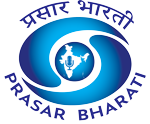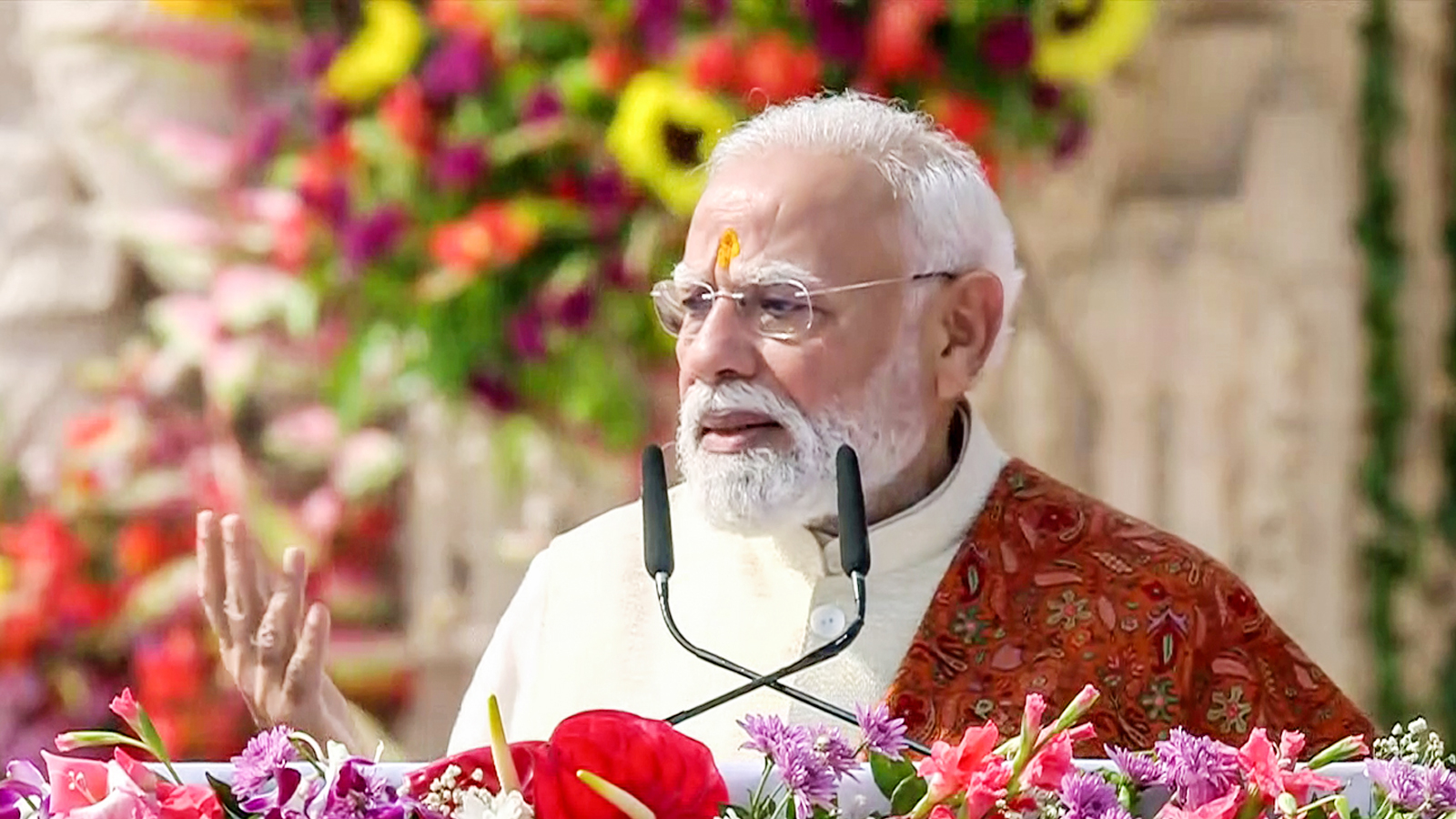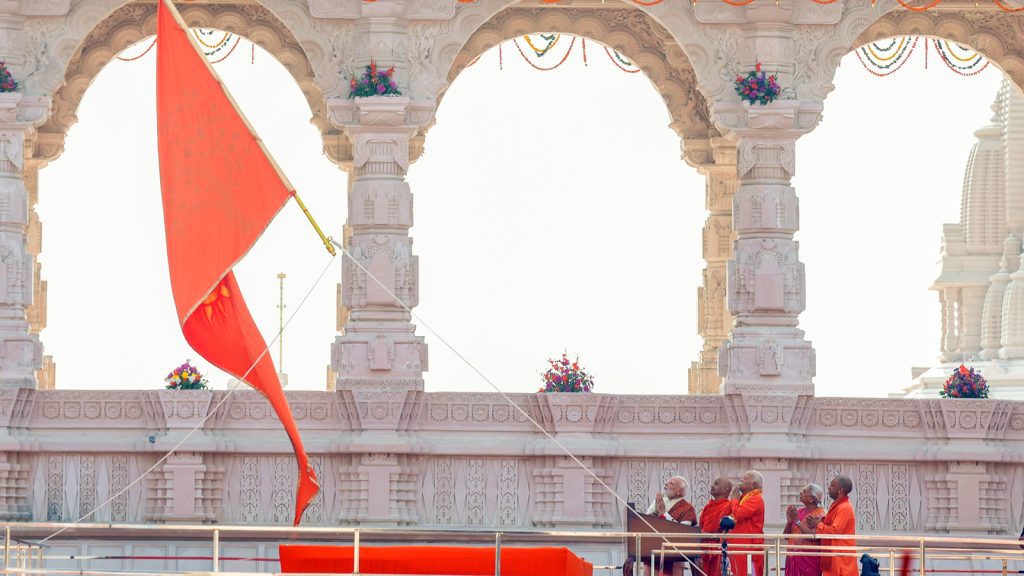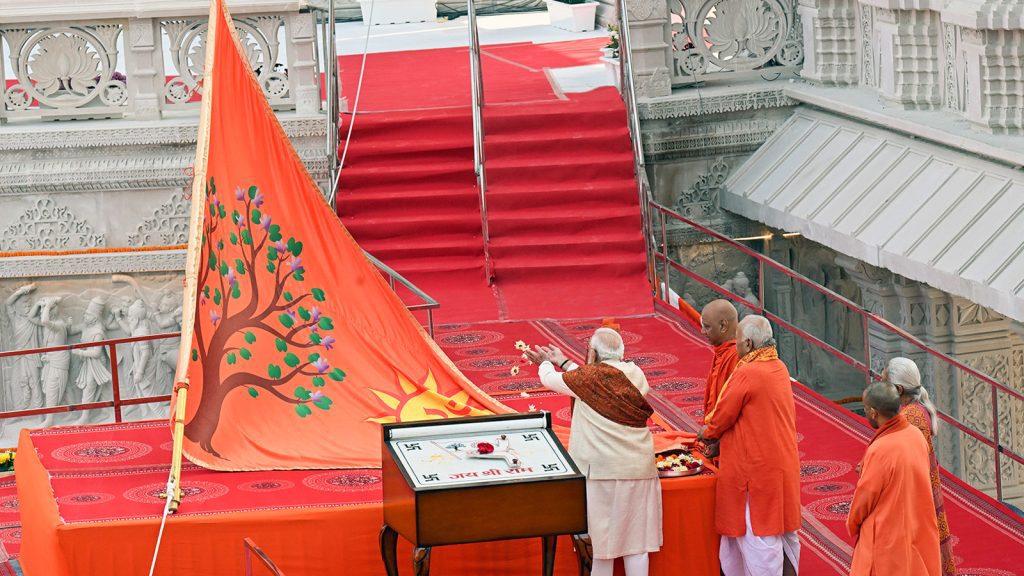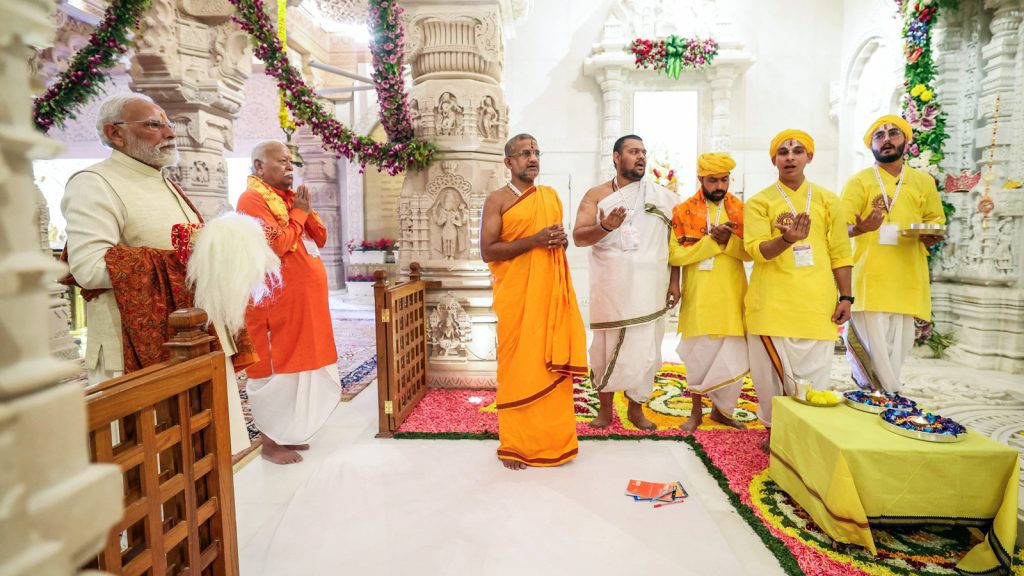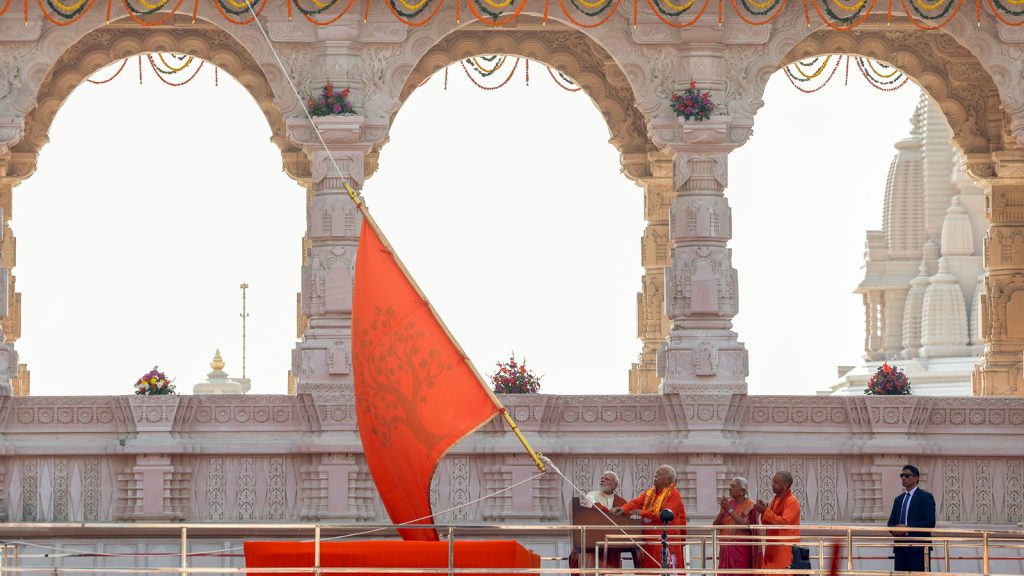Prime Minister Narendra Modi on Tuesday hoisted the saffron Dharma Dhwaja atop the Shri Ram Janmabhoomi Temple in Ayodhya, marking a key milestone following the construction of the Ram Mandir. This ceremonial act served as the centerpiece of the day’s proceedings, symbolizing the spiritual completion of the temple structure.
Other dignitaries present during the momentous ceremony were Uttar Pradesh Governor Anandiben Patel, Chief Minister Yogi Adityanath, and Rashtriya Swayamsevak Sangh (RSS) Sarsanghchalak Dr. Mohan Bhagwat.
Addressing the gathering at the Dhwajarohan Utsav, the Prime Minister described the event as a significant moment for the country’s cultural and social landscape.
“Today the entire India and the entire world is filled with the spirit of Lord Shri Ram,” PM Modi said, adding that devotees across the world were experiencing “unique satisfaction, boundless gratitude, and immense joy.” He said centuries-old wounds were healing and centuries of resolve had reached fulfillment. “This marks the culmination of a yajna whose fire remained ignited for 500 years,” he remarked.
Calling the newly hoisted flag a symbol of India’s cultural resurgence, PM Modi said, “This Dharma Dhwaja is not merely a flag, but the flag of the renaissance of Indian civilization.” He added that its symbols—including the saffron colour, the Solar dynasty emblem, the sacred Om, and the Kovidar tree – reflected the ideals of Ram Rajya. “This flag is resolve, this flag is success… the embodiment of dreams carried forward for centuries,” he said.
The Prime Minister said the Dharma Dhwaja would stand as a reminder that “victory belongs only to truth, not to falsehood,” and that “in the world, karma and duty must hold primacy.” He added that it signified a collective commitment to build “a society where there is no poverty, and no one is sad or helpless.”
PM Modi extended greetings to Ram devotees around the world and expressed gratitude to the donors, planners, artisans, and workers involved in the temple’s construction.
Highlighting the significance of Ayodhya, PM Modi said, “Ayodhya is the land where ideals transform into conduct.” He recalled the role of Maharishi Vashistha, Maharishi Vishwamitra, Maharishi Agastya, Nishadraj, Shabari and Hanuman in shaping the life of Shri Ram, noting that their teachings and actions helped Ram become Maryada Purushottam.
The Prime Minister said the seven newly built temples in the Ram Mandir complex -dedicated to saints and devotees associated with Lord Ram – reflect India’s collective strength and social harmony. He urged visitors to explore the newly constructed Sapt Mandir precinct, which includes temples of Mata Shabari, Nishadraj Guha, Maharishi Valmiki, Maharishi Vashistha, Maharishi Vishwamitra, Maharishi Agastya and Mata Ahilya. “Along with strengthening our faith, these temples also empower the values of friendship, duty, and social harmony,” he said.
Stating that Ram Rajya prioritizes equality and inclusivity, PM Modi said, “Our Ram connects not through differences, but through emotions.” He added, “For Shri Ram, a person’s devotion is more important than lineage… and cooperation is greater than mere strength.”
He highlighted government efforts over the past 11 years to place women, Dalits, backward classes, tribals, farmers, workers, and youth at the centre of development. “When every section and every region is empowered, everyone’s effort will contribute to the resolve of a developed India by 2047,” he said.
Referring to the values associated with Lord Ram, the Prime Minister said, “Ram signifies ideals, Ram signifies discipline, and Ram signifies the supreme character of life.” He added, “Ram is not just a person, but a value, a discipline, and a direction.”
PM Modi called for awakening “Ram within ourselves” to build a developed India. “If India is to become developed by the year 2047 and if society is to be empowered, then we must awaken ‘Ram’ within ourselves,” he said.
The Prime Minister said that taking pride in heritage must be accompanied by a complete “liberation from the mentality of slavery.” He referred to Thomas Macaulay’s policies introduced in 1835 and said, “The coming ten years must be dedicated to freeing India from this mentality.”
He highlighted that India has longstanding democratic traditions. “India is the mother of democracy and that democracy is in our DNA,” he said, citing ancient examples such as Uttiramerur and Lord Basavanna’s Anubhava Mantapa.
PM Modi said India had gradually removed symbols of colonial influence, including the old Indian Navy flag, and replaced them with symbols rooted in Indian heritage. “This is not merely a change in design but a transformation in mindset,” he said.
The Prime Minister noted the rapid development in Ayodhya, including a new international airport, a modern railway station, and upgraded infrastructure. “Ayodhya is once again becoming the city that will serve as an example for the world,” he said. He added that the city aims to balance tradition and modernity, where “the sacred flow of the Sarayu and the stream of development will run together.”
Since the Pran Pratishtha ceremony, nearly 45 crore devotees have visited the Ram Mandir, he said, stating that this has boosted local income and economic activity.
Drawing a parallel with Lord Ram’s chariot in the war against Ravan, PM Modi said India’s journey towards becoming a developed nation requires similar attributes. “To accelerate the journey towards Viksit Bharat we need a chariot whose wheels are valor and patience, whose flag is truth and supreme conduct, whose horses are strength, prudence, restraint, and philanthropy, and whose reins are forgiveness, compassion, and equanimity,” he said.
He concluded by urging citizens to put national interest above self-interest and expressed hope that the values associated with Lord Ram would guide India’s future.





